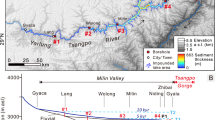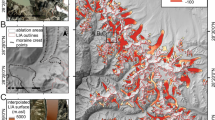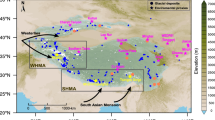Abstract
MUCH evidence of the last or Pleistocene Ice Age has been observed in various parts of the Central and the Lesser Himalayas. Lieut.-Col. J. L. Grinlinton has referred to the shape of polished and striated or grooved rock surfaces in the Liddar and Sind Valleys of the Kashmir Himalayas1. Many terminal moraines have also been noticed on the southern flank of the Pirpanjal at altitudes of somewhat less than 8,900 ft.; but no traces of the Pleistocene glaciation have been so far discovered anywhere in the Jammu Hills south of the Pirpanjal.
This is a preview of subscription content, access via your institution
Access options
Subscribe to this journal
Receive 51 print issues and online access
$199.00 per year
only $3.90 per issue
Buy this article
- Purchase on SpringerLink
- Instant access to full article PDF
Prices may be subject to local taxes which are calculated during checkout
Similar content being viewed by others
References
Geol. Surv. Ind., Mem. 49, Pt. 2.
Author information
Authors and Affiliations
Rights and permissions
About this article
Cite this article
MEHDIRATTA, R. Glaciation in the Jammu Hills. Nature 183, 255 (1959). https://doi.org/10.1038/183255a0
Issue date:
DOI: https://doi.org/10.1038/183255a0



